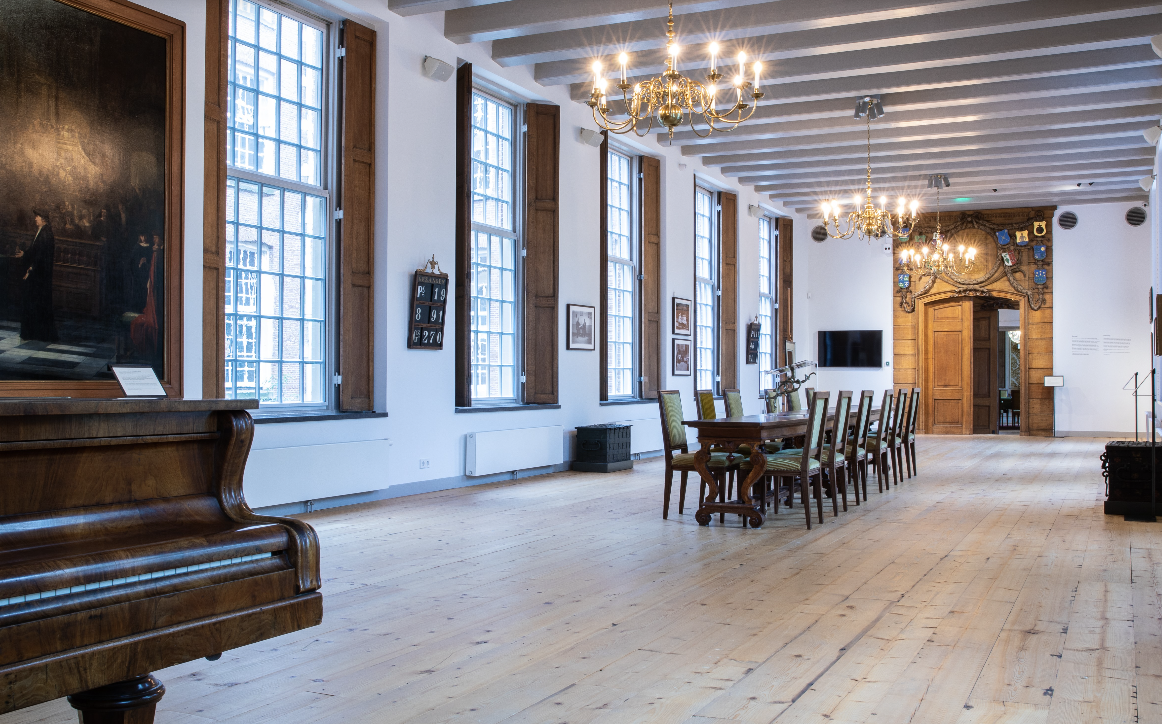
The Luther Museum Amsterdam is located in the Wittenberg building on Nieuwe Keizersgracht. This building, dating back to 1772, is named after the place where Martin Luther proclaimed his theses on the reformation of the then church in 1517, which led to the Reformation.
The building was originally constructed as the Evangelical Lutheran Diaconal Old Men’s and Women’s House. It played a significant role in caring for the poor, elderly, and orphans.
At the end of the 16th century, the Lutheran congregation was founded in Amsterdam. By the seventeenth century, about twenty percent of the population was Lutheran, and many buildings, such as the Old Lutheran Church on Spui and the Round Lutheran Church on Singel, serve as reminders of this history. Over the years, the Lutheran church and diaconate collected important heritage.
The building itself – including the regents’ rooms, the hallway, and the church hall – is the most significant piece in the collection. The heritage collection also includes paintings by artists like Breenbergh and Ruysdael, silverware, and authentic furniture.
The Luther Museum tells the story of the Lutherans in Amsterdam and the Netherlands, with a unique approach to faith and a strong sense of care for one another.